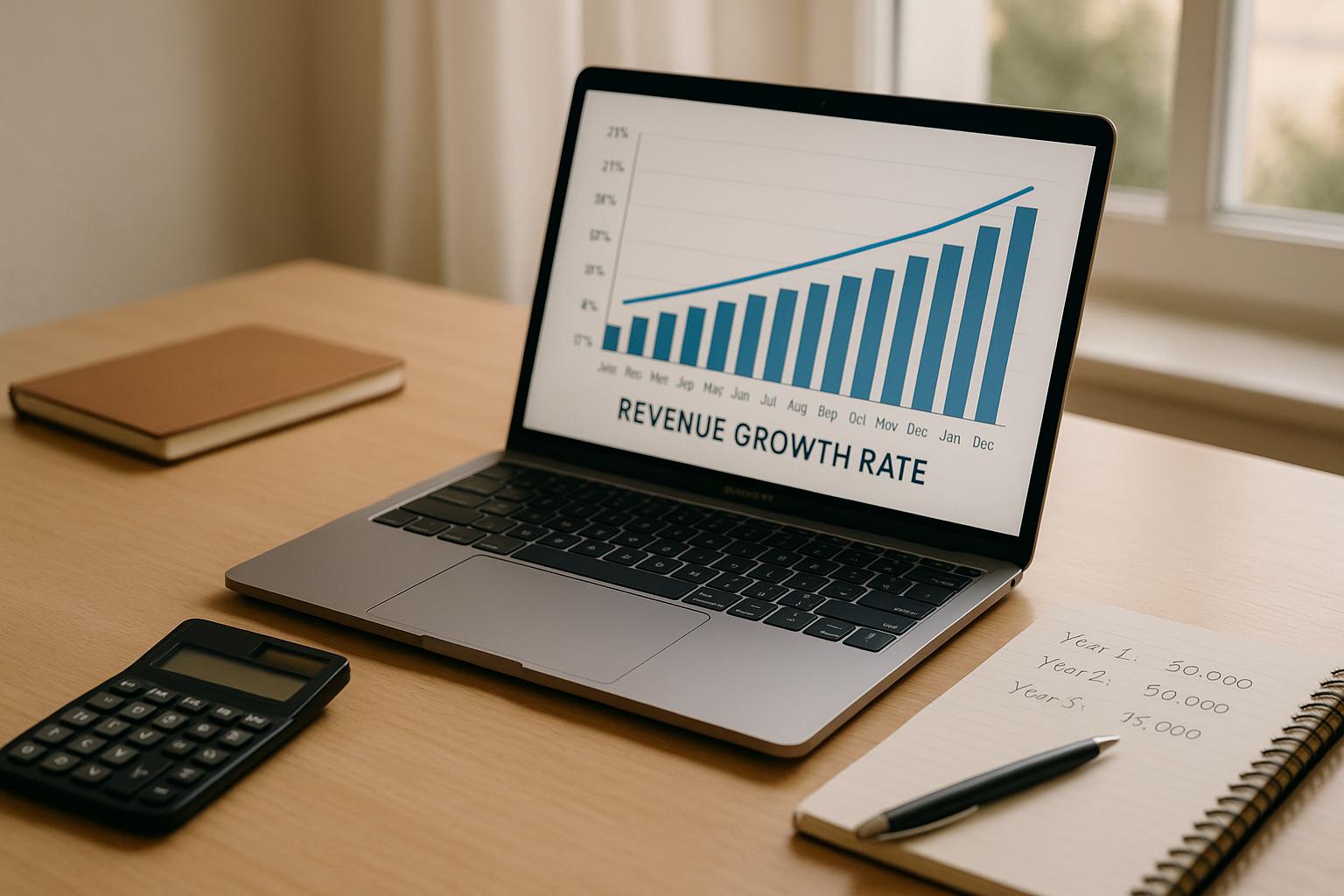Regional VC Fund Performance: Key Metrics

Want to understand how venture capital (VC) funds perform across regions? Here's the key takeaway: Regional factors like market maturity, sector trends, and economic conditions significantly impact VC fund returns. To evaluate performance, investors rely on four main metrics:
- IRR (Internal Rate of Return): Tracks annualized, time-weighted returns.
- TVPI (Total Value to Paid-In): Measures total fund value compared to invested capital.
- DPI (Distributions to Paid-In): Reflects actual cash returns to investors.
- RVPI (Residual Value to Paid-In): Highlights unrealized potential returns.
Quick Overview:
- North America: Strong exit markets, focus on IRR and TVPI.
- Europe: Balanced liquidity, DPI focus, thriving in deep-tech sectors.
- Asia: Evolving markets, RVPI emphasis, high growth potential with risks.
Why it matters: Adapting these metrics to regional contexts ensures better investment decisions, accurate benchmarking, and clear reporting for investors. Ready to dive deeper? Keep reading for a detailed breakdown of these metrics and regional insights.
Main VC Fund Performance Metrics
Understanding regional VC fund performance requires analyzing key metrics. Below, we break down how these metrics vary based on regional factors.
IRR Calculation and Use
Internal Rate of Return (IRR) tracks annualized returns while accounting for the timing of cash flows. Regional market characteristics heavily influence IRR benchmarks. For instance, funds in fast-growing regions often set higher return targets to reflect the elevated risks and rapid scaling opportunities. On the other hand, funds in more stable, mature markets tend to aim for lower, more conservative benchmarks due to reduced risk levels.
TVPI Measurement
Total Value to Paid-In (TVPI) compares a fund's realized and unrealized value against the total capital invested. Regional factors like market maturity and economic conditions shape TVPI expectations. For example, funds in emerging tech hubs might target higher TVPI multiples to offset extended holding periods and greater risks. Meanwhile, funds in well-established markets typically show more moderate TVPI ratios.
DPI Analysis
Distributions to Paid-In (DPI) highlights actual cash returns to investors, offering a clear view of liquidity outcomes. This metric is particularly useful for comparing regions with different exit environments. In markets with frequent IPOs or M&A activity, funds often achieve higher DPI values earlier, reflecting quicker capital returns. In contrast, regions with fewer liquidity events may see slower DPI growth.
RVPI Measurement
Residual Value to Paid-In (RVPI) focuses on unrealized value, making it a key metric for areas with limited exit opportunities. In regions where investments are held longer, higher RVPI levels can signal significant unrealized potential. Conversely, in regions with quicker exits, lower RVPI values are common as gains are realized sooner.
Adapting these metrics to regional contexts is crucial for accurate performance evaluation, effective benchmarking, and making well-informed investment decisions.
Regional Performance Analysis
Looking at the numbers more closely, it's clear that regional factors play a big role in shaping venture capital (VC) outcomes. Local market maturity and economic conditions heavily influence returns. For example, North America benefits from strong exit markets and extensive expertise, making it a fertile ground for investments. In Europe, market outcomes are shaped by a mix of economic conditions across different countries. Meanwhile, Asia presents a more complex picture, with rapidly changing economies and evolving regulations adding layers of difficulty for investors.
Industry focus also plays a major role in performance across regions. In North America, fintech thrives thanks to advanced financial systems and well-defined regulatory environments. Regions with strong research institutions often lead in healthcare technology. In Europe, deep-tech sectors like AI and quantum computing gain momentum due to access to skilled talent and government-backed research initiatives.
This analysis highlights the importance of tailoring investment strategies to match the strengths of local markets and the specific trends of each industry.
sbb-itb-e766981
Performance Measurement Standards
Clear performance standards are crucial for VC funds to evaluate success against both regional and industry benchmarks. These standards leverage regional insights to provide actionable and meaningful comparisons.
Why Compare Performance
Comparing performance helps identify competitive positioning and areas that need improvement. By collecting unified data on financial and operational metrics - tracked weekly and reviewed monthly - funds can uncover trends and refine their strategies.
Standardized comparisons also highlight regional opportunities, improve portfolio allocation, benchmark returns, and enhance investor reporting. These comparisons lay the groundwork for the methods explained below.
Comparison Methods
To ensure accurate regional comparisons, consider the following:
- Market-Adjusted Metrics: Tailor metrics to account for regional differences like exit multiples, holding periods, currency shifts, and market maturity. These adjustments ensure metrics align with local market conditions.
- Standardized Reporting Framework: Use consistent review schedules, from weekly updates to annual summaries, to maintain uniformity in comparisons.
- Cross-Regional Analysis: When comparing across regions, factor in differences such as regulatory environments, exit opportunities, market sizes, and industry sector concentrations.
| Comparison Element | North America | Europe | Asia |
|---|---|---|---|
| Exit Markets | Highly liquid | Moderately liquid | Varying liquidity |
| Regulatory Environment | Standardized | Complex, varied | Evolving |
| Industry Focus | Tech, Healthcare | Deep Tech, Industrial | Consumer Tech |
| Performance Metrics | IRR, TVPI dominant | DPI emphasis | RVPI focus |
This table highlights the unique characteristics of different regions. Effective performance measurement relies on consistent data collection and analysis while recognizing the specific traits of each market.
Using Metrics in VC Practice
Expanding on regional analysis, applying metrics plays a key role in venture capital (VC) decision-making and enhances both investment strategies and limited partner (LP) reporting.
Investment Decision Making
Regional performance data is essential for shaping portfolios and assessing markets. Evaluating data within its geographic context helps VC firms pinpoint opportunities and allocate resources more effectively. Here's how it can be applied:
- Market-Specific Benchmarking: Compare opportunities to regional averages to gauge performance potential.
- Risk Assessment: Consider local market conditions, regulations, and exit scenarios to manage risks.
- Portfolio Balancing: Spread investments across regions to tap into diverse growth opportunities.
These strategies also lay the groundwork for transparent and informative LP reports.
LP Report Creation
When creating reports for limited partners, it’s crucial to clearly connect regional performance to fund outcomes. Effective reports should emphasize:
- Regular Performance Updates: Share key regional metrics and trends consistently.
- Market Context: Include economic indicators that influence regional performance.
- Portfolio Progress: Highlight achievements and advancements in local investments.
- Exit Potential: Provide insights into regional exit opportunities and timelines.
As Patrick Wallain, Founder/CEO of ABLEMKR, puts it:
"If you want to sleep better at night, hire Phoenix Strategy Group."
Leveraging consistent regional metrics is essential for managing investments successfully and maintaining strong LP relationships.
Conclusion
Key Takeaways
Regional venture capital performance metrics play a crucial role in making smart investment choices and evaluating fund success. These metrics offer a clear way to analyze how funds perform in specific regions. However, they need to be viewed within the context of each region to spot opportunities, assess risks, and adjust strategies as markets evolve and grow.
While Silicon Valley has historically been a leader in performance, new tech hubs in other areas are showing strong potential. This highlights the importance of having a unified approach to measure performance.
The Need for Standardized Metrics
Based on our analysis, using a standard measurement framework is essential for managing funds effectively. By leveraging regional data, standardized metrics make it easier to compare performances and report across different markets. This allows firms to spot trends, evaluate funds more consistently, and provide clear updates to limited partners.
"If you want to sleep better at night, hire Phoenix Strategy Group."
Standardized metrics create a consistent way to track performance, guide investment decisions, and improve returns across regions, helping everyone speak the same language when evaluating opportunities.




